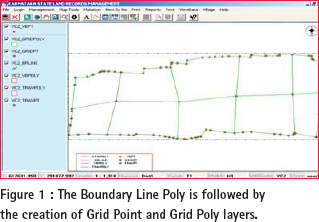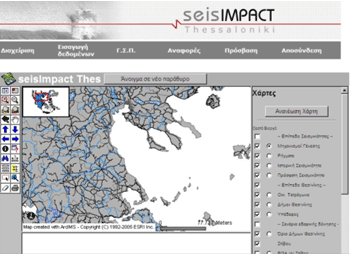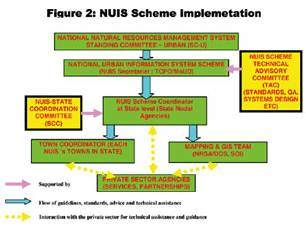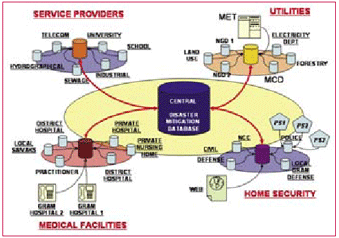Articles in the Mycoordinates Category

It is not just having computers in offices or creating websites, but it involves the creation of systems; integrating technology with administrative processes; human resources and dispensing information and services faster to the citizens. e-Governance offers a number of advantages for the government as well as the public. It shifts the centre of power from human agencies to technology, which is easier to deal with. For example, if a citizen wants some information on building codes, he/she has to go to the office of the local authority to get it, often shuttling from one table to another. If such information is made available on websites, it makes things easier for the citizens as well as the authorities.
It is not simply a project.
It is an ambition.
An assertion of technology.
And taking the technology beyond the realms of monopoly.
There are hurdles. Political and economical.
But stronger is the will to overcome them.
There are confl icts. On approach and interest.
There are frustrations on the delay. And, at stake is the credibility.
Still, there is a resolute to …
India celebrates 60 years of independence.
We are happy once again.
A celebration for democracy and democratic values.
On the occasion, we take a look at two movements.
National Spatial Data Infrastructure and Sustainable …

LAND forms important part of development activity. Land revenue is one of the sources of income for state governments. It may come from land holdings by private individuals, real estate transactions or other natural resources being tapped by various sections of the society. Hence, creation of a Land Information Management System involves
We published a circular by Central Board of Excise and Customs, Government of India that came out in April (Coordinates, May 2007).
The circular classifies high technology featured mobile phone including GPS as a secondary feature as mobile phone.
That implies four per cent custom duty rather than 34 per cent as applicable to …

Greece has suffered many times from big earthquakes that caused human victims as well as big damage to public and private infrastructure. However, the 1978 earthquake in Thessaloniki (Mw = 6.5) motivated the beginning of a more systematic confrontation of the impact of such phenomena. This happened because it was the first time that a powerful earthquake affected a big modern city of roughly one million of residents. Thessaloniki presented the formal characteristics of Greek urban built environment: buildings with 4 to 8 storeys, large population in numbers and density, mixed land use, traffic problems and lack of effective planning of management of natural catastrophes. After the Thessaloniki earthquake, a situation of chaos was created due to the panic, the destructions, the lack of information and the innumerable calls on help, but also on control of static condition and damage of buildings. By that time, there was no specific procedure for the inspection of buildings and infrastructure. However, after the first period of embarrassment, the state agencies reacted. Inspection forms were designed, printed and distributed during the first days after the earthquake. The buildings were inspected by two-member teams of civil engineers in order to be classified in categories with regard to their damage and usability. These paper inspection forms constitute a valuable database concerning the impact of the earthquake to the buildings of Thessaloniki.
Two years ago, we had a dream.
We started on a mission.
With con? dence and conviction.
Set out on a journey of positioning, navigation. And beyond.
Discussing, deliberating and debating
We navigated through technology and took a position.
This month, the 25th issue, it is time for us to think
What we have achieved. what more could have been accomplished.
It is …

State of the art global communication technologies and thriving economy is facilitating Indian cities to compete in the global environment. The constant transformation of urban areas into complex entities has brought forth new challenges and opportunities for Planners to design and implement a variety of activities in spatial terms. There is need to tread common ground so as to address problems and issues in the right perspective to assist cities in coping with economic realities and thereby produce high quality responsive environment and demonstrate successful urban solutions.
Prof Madhav N Kulakrni.
A member of Coordinates family.
We had been fortunate to have his guidance for last two years.
His sudden demise has left us in shock.
His name itself was synonym of GPS/Geodesy in India.
An irreparable loss to GPS community and science.
We share our heartfelt grief with the bereaved family and pray for strength to …

In recent past , humanity has suffered an increasing number of natural disasters affecting more than 2.5billion people, killing 478,100 and causing economic losses of about US$690bn (UNEP/ GRID-Arendal, 2005). Some of the distinctive instances are: December 2004 Indian Ocean earthquake and its concomitant tsunamis, The US eastern coast and Central America, hurricanes Katrina, Rita, Mitch, Stan and Wilma in September-October 2005, Pakistani earthquake of 2005, and now the current avian influenza in Asia and Europe. Natural and manmade tragedies, such as earthquakes, foods, nuclear catastrophes, pose an ever-present challenge to emergency services. Victims and societies at large have responded differently in each case. Some were heroic, some responsible but many panicked and responded irrationally. This aggravated the already bad situation. All of them could have responded more effectively if they were better informed and aright managed.










 (5.00 out of 5)
(5.00 out of 5)